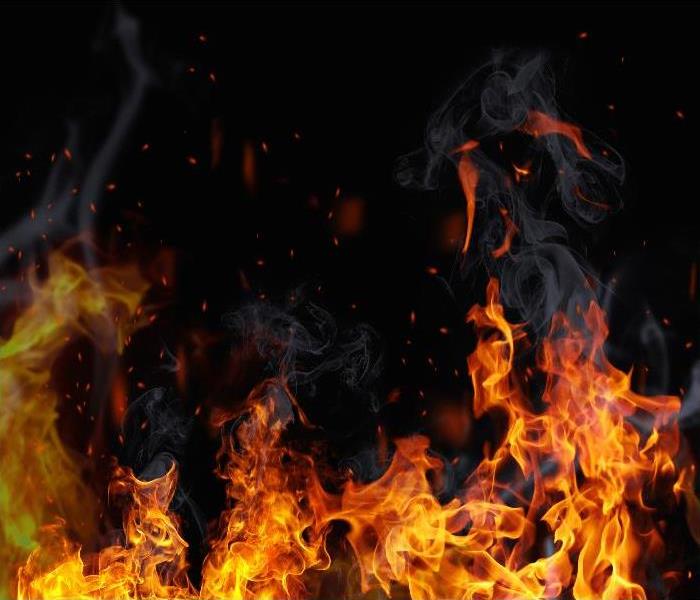How Do Professional Fire Damage Restorers Clean Different Kinds of Fire Residues and Deal with Charring in Plainsboro?
8/20/2020 (Permalink)
 Advanced training in the characteristics of soots and the science behind their efficient removal set SERVPRO apart from ordinary cleaning teams.
Advanced training in the characteristics of soots and the science behind their efficient removal set SERVPRO apart from ordinary cleaning teams.
One Size Does Not Fit All Circumstances for Fire Damage Cleanup in Plainsboro -- Let the Experts at SERVPRO Assess the Damage and Residues and Match Them to the Most Effective and Best Practices Solutions
If a Plainsboro business owner has not faced a household fire's aftermath, the challenges of cleaning away the smoke, soot, and charring can be daunting. Even if you pride yourself on keeping an immaculate business and you and your cleaning crew are willing to take on do-it-yourself projects, fire damage residues are notoriously tricky to loosen and remove. Following conventional cleaning procedures often makes things worse, which adds considerable stress to your management of an already trying situation.
What Can a Restoration Company Do About Charring?
Depending on how intense the flames and heat became during the fire, damage in your Plainsboro commercial building can include visible charring. Professional handling from a full-spectrum restoration company changes the lens through which loss is viewed. Although your first impulse might be to arrange for the tear-out and replacement of the building materials that seem badly burned, a professional restorer's assessment can reveal a different, less expensive, and disruptive path. Examples of what the Institute of Inspection Cleaning and Restoration Certification (IICRC)-trained technicians on our work crews substitute for demo include:
Cleaning with products and tools matched to the type of residue (if we clear away the soot, the damage can be more accurately assessed and might need only minor touches to return to preloss condition)
Testing of the durability of the surface for more aggressive cleaning -- if it "passes," we consider:
• Scraping off charred materials
• Brushing off charred materials
• Sanding off charred materials
• Using proprietary cleaning creams with integrated abrasives or "grit" that removes the layers of burned materials
What If Building Materials Are Too Charred for Restoration?
SERVPRO's general contractor's license offers options a mere cleaning operation would not have available. If the flames and heat cause damage so severe that the structures involved are weakened, it might not be safe to insist on a restoration-only approach. Our construction crews can help with the assessment of the damage and provide consultation on the more efficacious ways to proceed. A partial or total rebuilding of the affected structural components can be made a phase of the overall fire damage recovery agenda.
What Are Best Practices for Cleaning of the Remaining Soiled Surfaces?
The project manager reviews the characteristics of the residues on surfaces throughout the entire commercial space. It is essential not to miss inspecting an area of the property even if it is far from the original fire because the smoke and soot drift on air currents and through the HVAC system to invade all spaces.
Dry Soot
Generated when wood and paper burn hot, the residues are ashy and adhere lightly to surfaces. Cleaning methods include dry sponging, feather dusting, vacuuming with HEPA-filtered equipment, use of compressed air, and avoidance of wet cleaning solutions or cleaning tools to minimize smearing.
Wet Soot
When plastics, damp textiles, rubber, and other materials like electrical cords and wiring burn slowly or smolder, a thick, sticky soot deposits. Our team tests cleaners and then settles on the ones that help break the bond between the surfaces and the soot. Water-based soiling is matched with water-based cleaners; oil-based soiling is matched with oil-based cleaners or detergents that bridge the gap.
Protein-Based Soot
Kitchen fires produce a unique type of residue that adheres tenaciously, smells horrible, and is challenging to remove. The residue is actually the dehydrated remains of foods, grease, and oils. To eradicate it from surfaces, we consider the use of solvents and abrasive tools and agents. The malodors might require the use of advanced technologies that attack the smells on a molecular level, pairing with the odor-bearing particles or chemically altering them to neutralize the odor. These technologies include:
• Thermal fogging -- recreating the conditions of the fire, and combusting deodorants to pair with the odiferous bits
• Hydroxyl generation -- producing hydroxyls with UV rays that seek out the residues and alter their chemical composition
• Ozone machines -- using the process of oxidation to remove smells
• Enzymatic cleaners -- digesting the offending residues
Advanced training in the characteristics of soots and the science behind their efficient removal set SERVPRO of East Brunswick / Princeton Meadows apart from ordinary cleaning teams. Call us at (732) 432-9800 to set up an assessment at your business property and get the project going.






 24/7 Emergency Service
24/7 Emergency Service